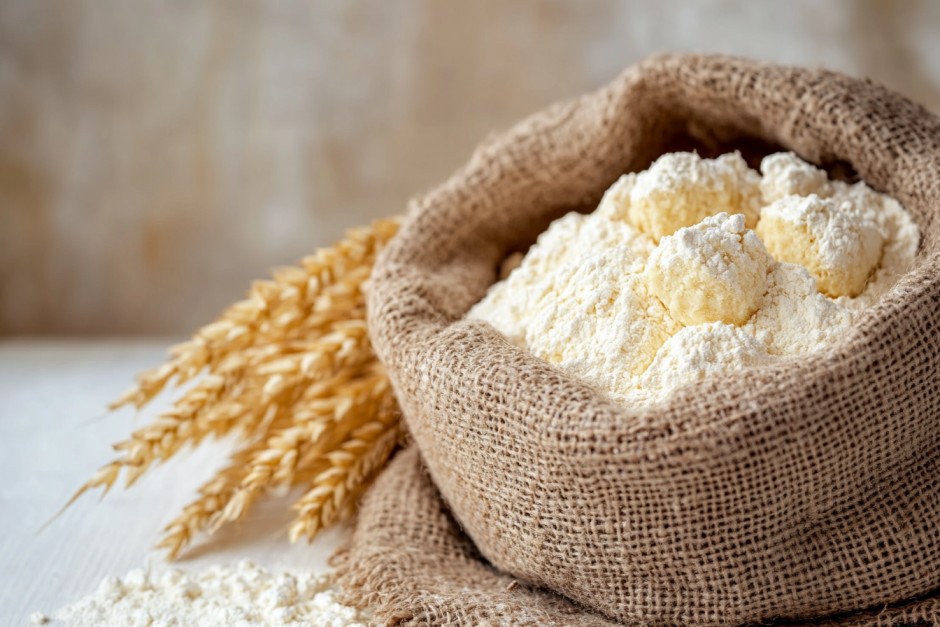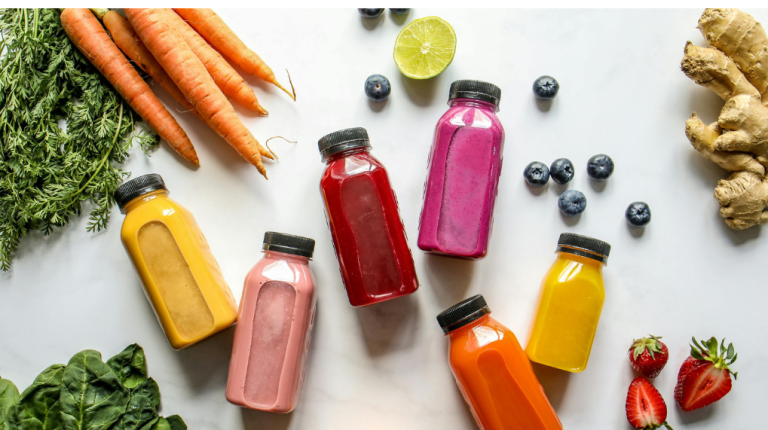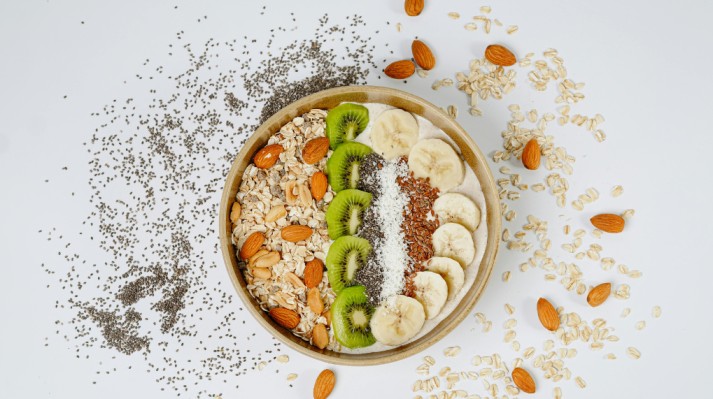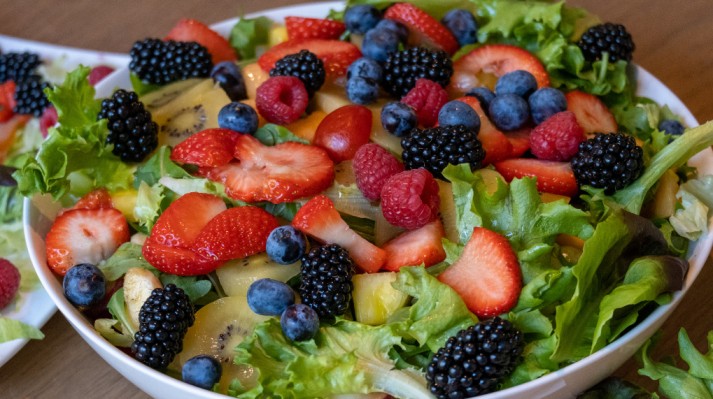Are you aware of the hyped and most followed recent diet type by today’s generation? It is a gluten-free and dairy-free diet.
A gluten-free, dairy-free diet is straightforward to explain. The diet includes the elimination of all dairy products and foods containing gluten. Some individuals prefer this diet due to food allergies or sensitivities such as lactose intolerance, gluten intolerance, celiac disease, and dairy allergies. On the other hand, other individuals follow this diet to alleviate digestive problems and enhance their energy levels and overall well-being.
The main objective or goal of this diet is to get advice on how to begin and sustain a balanced diet free from gluten and dairy, ensuring nutritional adequacy while exploring suitable food options, meal planning, and lifestyle adjustments for overall health and well-being. At QUA Nutrition, we provide the right meal planning with great advice from professional nutritionists and dietitians for gluten-free and dairy-free diet plans.
Now, let’s move ahead in the below sections. This blog will be your guide to understanding in detail about gluten-free and dairy-free diets. A gluten and dairy-free diet can aid in weight loss by reducing inflammation and bloating, both of which are common side effects of food intolerances. By eliminating processed gluten and dairy products, you’re more likely to consume whole, nutrient-dense foods, which can improve digestion and boost metabolism. This approach also helps you avoid empty calories and unhealthy fats, making it easier to achieve your weight loss goals.
What is Gluten Intolerance?
Many individuals get confused between gluten intolerance and celiac disease. The main difference is celiac disease is a type of autoimmune disorder, whereas gluten intolerance is just a sensitivity. Gluten intolerance is also known as non-celiac gluten sensitivity.
However, you treat both celiac disease and NCGS by cutting down gluten from your diet. Individuals with celiac disease must completely avoid gluten for life, whereas those with non-celiac gluten sensitivity (NCGS) may experience symptom relief by gradually reducing their intake of gluten and carbohydrate.
Do you know how gluten intolerance affects the body? Celiac can damage the small intestine. Some people who don’t have celiac disease still seem to feel sick after eating foods that contain gluten. They may experience bloating, diarrhoea, headaches or skin rashes.
Examples of gluten-containing foods are Beer, ale, porter, stout (usually containing barley), Breads, Bulgur wheat, Cakes and pies, Candies, Cereals, Communion wafers and Cookies and crackers.
What is Dairy Intolerance?
Lactose intolerance differs from a milk or dairy allergy. A dairy allergy triggers an immune response that can cause swelling, breathing issues, and anaphylaxis. And, lactose intolerance involves difficulty digesting the sugars found in milk products without an immune reaction. This leads to intestinal problems such as diarrhoea and bloating.
Lactose intolerance occurs when the body struggles to digest lactose, a sugar in milk and dairy. Individuals with this condition may experience gas, cramps, bloating, and diarrhoea after immediately consuming dairy products. This happens because undigested lactose passes into the intestines, leading to disturbing digestive symptoms. So, individuals have to manage this by avoiding dairy or using lactose-free alternatives.
Foods to avoid for lactose intolerance are Milk (whole, skim, condensed, evaporated); Cheese (soft cheeses like cream cheese, ricotta); Yogurt (regular yogurt); Ice Cream; Cream (heavy cream, sour cream); Butter (though some tolerate small amounts) and Milk-based sauces (alfredo, creamy dressings).
Foods to avoid for dairy allergies are all forms of milk (cow, goat, sheep); cheese (any type); yogurt; Ice Cream; Butter; Casein-containing products; Whey protein (found in many processed foods), and Dairy-based spreads and dips.
Benefits of a Gluten and Dairy-Free Diet
Who Benefits from a Gluten-Free Diet?
A gluten-free diet primarily benefits individuals with celiac disease as discussed earlier – it is an autoimmune disorder triggered by gluten, leading to intestinal damage. Non-celiac gluten sensitivity also warrants a gluten-free approach, alleviating symptoms such as bloating and fatigue.
For those with these conditions, avoiding gluten can improve digestive health, enhance energy levels by reducing fatigue, and lower inflammation throughout the body. Moreover, some individuals may experience improved mental clarity and overall well-being when eliminating gluten from their diets. Ultimately, gluten-free eating is crucial for managing these specific health issues and promoting a better quality of life.
Who Benefits from a Dairy-Free Diet?
A dairy-free diet benefits individuals with lactose intolerance, as it alleviates digestive discomfort like bloating and gas. It may also help those with acne, as some studies suggest dairy can exacerbate skin issues. Additionally, people with respiratory conditions, such as asthma, might find relief from mucus production when eliminating dairy.
Improvements can include enhanced digestion, clearer skin, and reduced sinus problems, contributing to better overall health. By avoiding dairy, many experience increased energy and comfort, making it a beneficial choice for those sensitive to dairy products or seeking to improve their well-being.
The Benefits of Combined Gluten and Dairy-Free Eating
Starting a gluten-free and dairy-free diet can improve your overall health condition. This diet is not necessary for individuals with disease or sensitivities; any individual who wants to maintain healthy digestive health can go for it. You can maintain a healthy lifestyle with this diet.
Further, Gluten and Dairy-Free Eating reduces inflammation in your body, manages food sensitivities and helps to fight chronic diseases and disorders. Moreover, these diets improve your gut health and increase energy levels. This is why today’s generation chooses to intake gluten and dairy-free diets.
Foods to Eat on a Gluten and Dairy-Free Diet
Naturally Gluten-Free and Dairy-Free Foods
Here is the list of food items to enjoy as part of a healthy, gluten-free, and dairy-free diet.
Fruits and Vegetables
- Fresh fruits (apples, bananas, berries, oranges)
- Fresh vegetables (spinach, carrots, broccoli, peppers)
- Potatoes (white, sweet)
Grains
- Rice (brown, white, wild)
- Quinoa
- Corn (cornmeal, polenta)
- Millet
- Sorghum
Proteins
- Meat
- Fish and seafood
- Eggs
- Legumes (beans, lentils, chickpeas)
- Tofu and tempeh (check for gluten-free labels)
Nuts and Seeds
- Almonds, walnuts, cashews
- Chia seeds, flaxseeds, pumpkin seeds
- Nut butter (without added gluten ingredients)
Note: Always check labels for potential cross-contamination.
Gluten-Free Grains and Alternatives
Gluten Free Grains
- Quinoa
- Rice
- Buckwheat
- Millet
- Sorghum
- Teff
Gluten Free Flours
- Almond Flour
- Coconut Flour
- Brown Rice Flour
- Tapioca Flour
- Chickpea Flour
- Sorghum Flour
Gluten-Free Breads, Pasta, and Cereals
- Corn Tortillas
- Rice Bread
- Gluten-Free Pasta
- Zucchini Noodles
- Chickpea Pasta
- Gluten-Free Oats
- Cornflakes
- Rice Chex
- Quinoa Puffs
Dairy-Free Alternatives
Plant-based dairy alternatives such as almond milk, soy milk, coconut yoghurt, and vegan cheeses are great options to avoid dairy. You can include fortified versions to ensure adequate intake of calcium and vitamin D. This diet will support your bone health and overall nutrition in a plant-based diet.
Protein Sources
Non-dairy protein sources include legumes (beans, lentils), tofu, and tempeh, along with poultry and fish. If you want to take a balanced protein diet without dairy or gluten, you can try salads topped with chickpeas, quinoa bowls with grilled chicken, or stir-fries featuring tofu and a variety of vegetables.
Also, adding nuts and seeds to your breakfast cereals and salads also enhances the protein content in meals and snacks.
Foods to Avoid on a Gluten and Dairy-Free Diet
Gluten-Containing Foods
Grains and Grain Products:
- Bread
- Pasta
- Baked Goods
- Cereals
- Crackers
- Couscous
Processed Foods:
- Beer – Brewed from barley.
- Snack Foods
- Seitan
Hidden Sources of Gluten
- Soups and Broths
- Sauces and Gravies
- Dressings
- Processed Meats
- Spices and Seasoning Mixes
- Ice Cream
- Condiments
Dairy-Containing Foods
Common Dairy Products to Avoid
- Milk
- Cheese
- Butter
- Cream
- Yogurt
- Ice Cream
Hidden Sources of Dairy
- Processed Foods
- Chocolate
- Certain Breads
- Condiments
- Baked Goods
- Canned Soups and Broths
- Protein Powders
Section 5: Tips for Transitioning to a Gluten and Dairy-Free Diet
-
Reading Food Labels
When you are transitioning to a gluten and dairy-free diet, you must carefully read ingredient lists whenever purchasing food items, especially packed and processed food. Look for specific terms such as wheat, barley, rye, casein, and lactose to identify gluten and dairy. Certification symbols, such as “gluten-free” or “dairy-free,” are indicators of safe products which you will spot on the packaging labels.
-
Cooking at Home
The best option is to cook meals at home to completely avoid gluten and dairy. Prepare gluten and dairy-free meals by exploring whole foods such as fresh fruits, vegetables, lean proteins, and gluten-free grains. Meal planning is essential to ensure balanced nutrition and to avoid last-minute cravings. Prefer to maintain a separate space for gluten-free ingredients to prevent cross-contamination with gluten-containing foods.
-
Dining Out and Social Situations
When visiting restaurants, inform staff about dietary restrictions and ask for gluten and dairy-free options. Do not hesitate to ask about ingredients in dishes. For social events or gatherings, bring your own gluten and dairy-free dishes to share. When travelling, research restaurants in advance and pack snacks to stay on track.
Conclusion
Transitioning your regular food habit to a gluten and dairy-free diet will enhance health for those with sensitivities and digestive issues. Intake of whole foods and exploring diverse alternatives to traditional meals will let individuals follow balanced nutrition under this chosen diet plan. Be mindful as eating plays a crucial role in recognizing what works best for your body.
A gluten and dairy-free diet can be a powerful way to improve digestion, reduce inflammation, and enhance overall well-being, especially for those with sensitivities or intolerances. At QUA Nutrition, we specialize in creating personalized gluten and dairy-free meal plans tailored to your unique needs and lifestyle. Our team of expert nutritionists ensures that your diet remains balanced and nutrient-rich, helping you achieve optimal health without compromising on taste or variety. Whether you’re managing food sensitivities or looking to embrace a healthier lifestyle, we’re here to guide you every step of the way. Contact us today!










